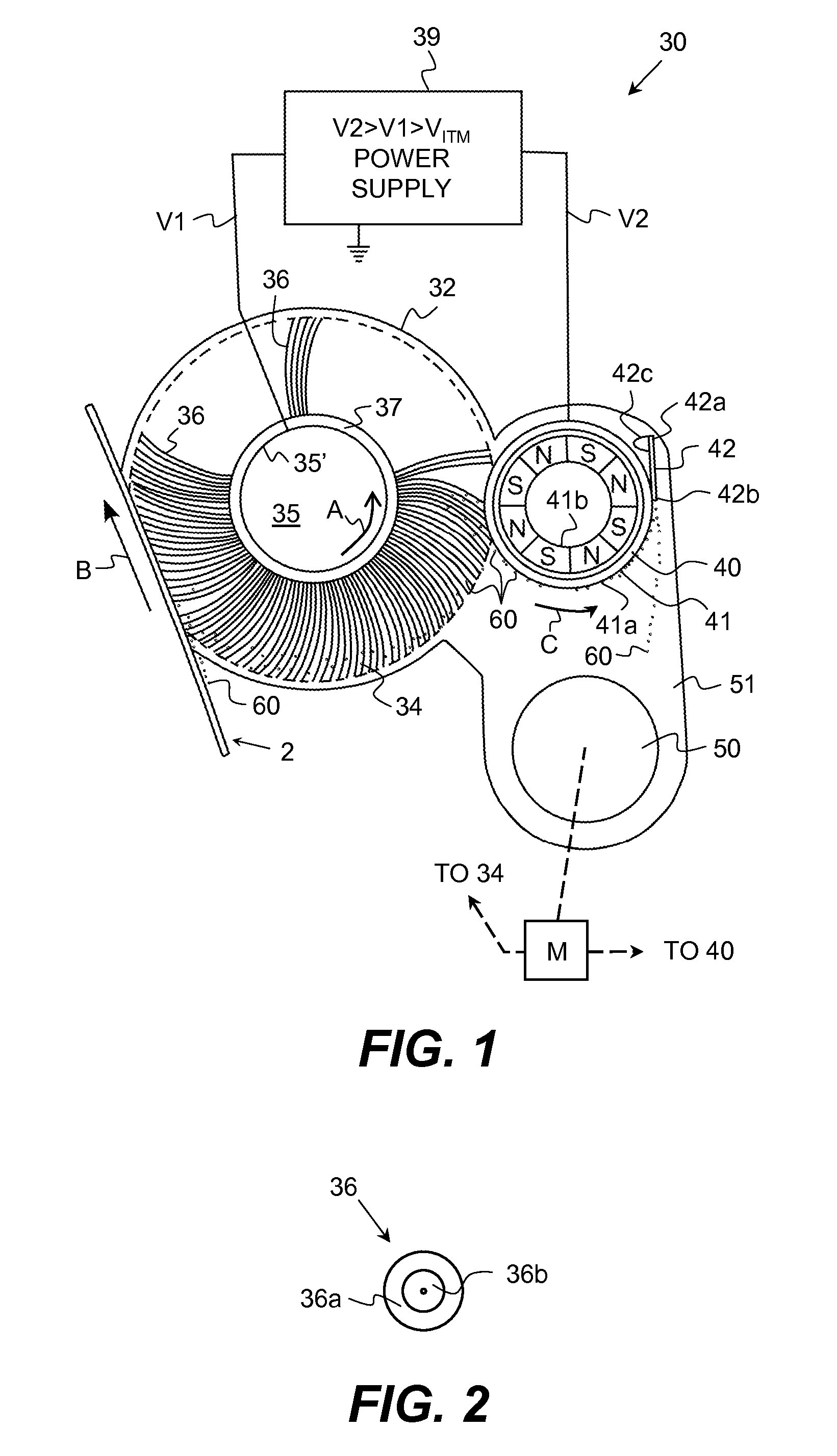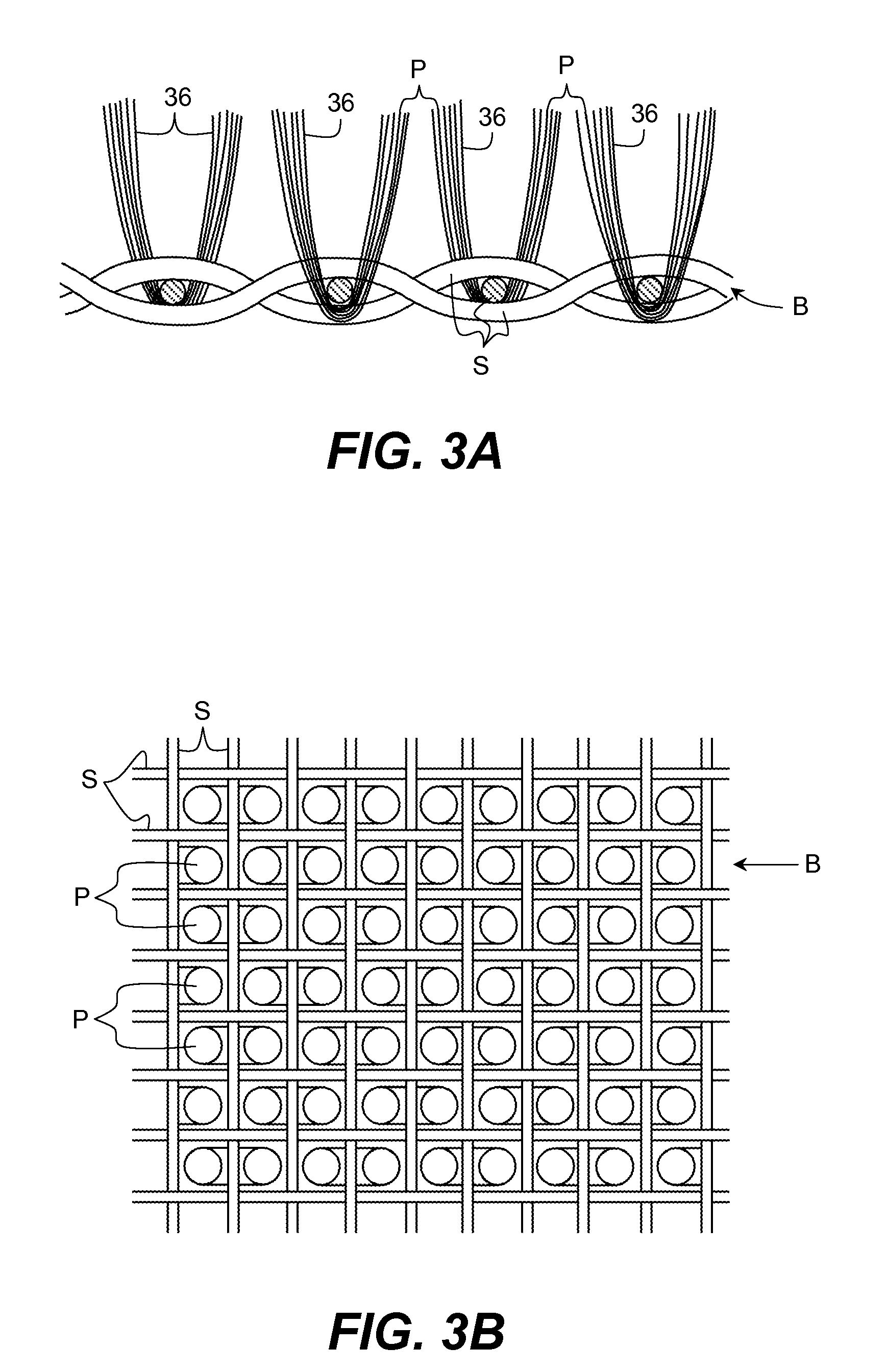Cleaning brush for electrostatographic apparatus
a technology for electrostatographic equipment and cleaning brushes, which is applied in the direction of electrographic process equipment, instruments, optics, etc., can solve problems such as complicated voltage control, and achieve the effects of improving the robustness of fiber variations, excellent cleaning performance, and reducing the tendency to draw curren
- Summary
- Abstract
- Description
- Claims
- Application Information
AI Technical Summary
Benefits of technology
Problems solved by technology
Method used
Image
Examples
example 1
[0042]Brushes were prepared substantially as in Comparative Example 2 except that the conductive coating was replaced with a non-conductive coating (RHOPLEX natural latex rubber from Heveatex Corp.) having a resistivity greater than 1012 ohm-cm, at a coverage of 0.0076 g / cm2.
example 2
[0043]Brushes were prepared substantially as in Example 1 except that following the coating of the non-conductive coating, a conductive coating (carbon loaded latex RA-512-16A-Black No. 1 from Heveatex Corp.) having a resistivity less than 109 ohm-cm, at a coverage of 0.003 g / cm2, was further applied. Scanning electron microscopy shows that the first non-conductive coating 37 penetrates the fiber bundles, coats the fibers, and separates the subsequently coated conductive layer 38 from the fibers (FIG. 4C).
example 3
[0044]The tips of finished brushes of Comparative Example 2 were coated with a heptane solvent solution of PICOTEX vinyl toluene / alpha-methylstyrene copolymer (from Hercules) to seal the conductive core that is otherwise exposed when the brushes are sheared during manufacturing.
[0045]Brush conductivity was evaluated in the following manner: A test fixture was constructed consisting of a cleaning station (with cleaning brush), cleaning station motor power supply, and two Cor-A-Trol's. One Cor-A-Trol was used to apply a constant 300V to the cleaning brush. The second Cor-A-Trol was used to apply a voltage to the detone roller, and to measure the current draw between the cleaning brush and detone roller. With the cleaning station motor running, the current draw was measured on the detone roller Cor-A-Trol at 100V increments starting a 0V and ending when the current draw exceeded the Cor-A-Trol ability to sink the current, or at the pre-determined limit of 1 KV.
[0046]FIG. 6 illustrates ...
PUM
 Login to View More
Login to View More Abstract
Description
Claims
Application Information
 Login to View More
Login to View More - R&D
- Intellectual Property
- Life Sciences
- Materials
- Tech Scout
- Unparalleled Data Quality
- Higher Quality Content
- 60% Fewer Hallucinations
Browse by: Latest US Patents, China's latest patents, Technical Efficacy Thesaurus, Application Domain, Technology Topic, Popular Technical Reports.
© 2025 PatSnap. All rights reserved.Legal|Privacy policy|Modern Slavery Act Transparency Statement|Sitemap|About US| Contact US: help@patsnap.com



